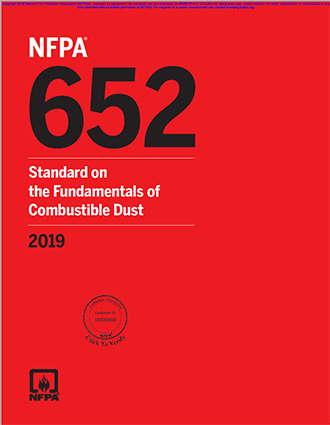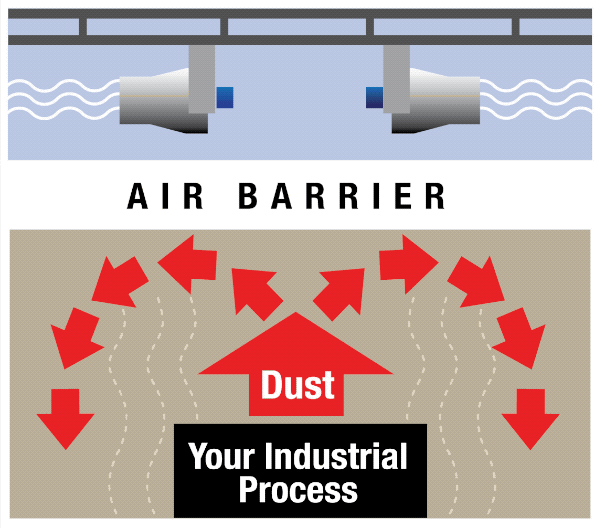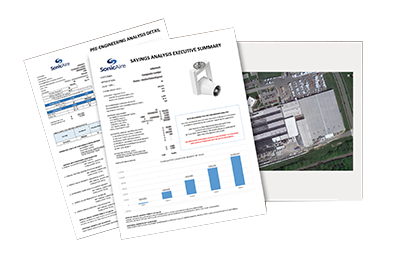When you work with wood, sawdust is inevitable. It gathers on nearly every surface, and its build-up can be extremely hazardous. How hazardous? Between 2008 and 2012, 50 dust-related explosion incidents occurred in the United States. And in the past four decades, more than 1,000 workers have been injured and another 185 killed in combustible dust events.
To prevent future safety incidents, the National Fire Protection Association (NFPA) has established standards NFPA 652 and NFPA 664 to help keep facility conditions safe. By adhering to these requirements, facilities can reduce their risk of dust-related issues.
 Two standards every wood processing facility need to address: NFPA 652 and NFPA 664
Two standards every wood processing facility need to address: NFPA 652 and NFPA 664
NFPA 652 (Standard on the Fundamentals of Combustible Dust) outlines the requirements for the management of fire and explosion hazards related to combustible dust. Updated from its previous version, the 2019 edition of NFPA 652 requires facilities to complete a dust hazard analysis (DHA), demonstrate progress in completing a DHA in years leading up to the deadline and continue to review and update the DHA every five years.
NFPA added further guidance for wood processing and woodworking facilities with standard NFPA 664 (Standard for the Prevention of Fires and Explosions in Wood Processing and Woodworking Facilities) which mentions, “A deflagration hazard shall be determined to exist where the layer of accumulated fugitive wood dust on upward-facing surfaces exceeds 3.2mm (1/8”) over 5 percent of the area or 93m2 (1000 ft2), whichever is smaller. For smaller areas, a deflagration hazard shall exist where the accumulated fugitive deflagrable wood dust layer is equipment to 3.2mm (1/8”) over 5 percent of the area.” To help put this in perspective, 1/8” is the size of the diameter of the tip of an average pen.
Facilities have until September 7, 2020 to comply with the requirements of NFPA 652.
Under NFPA 652, a Dust Hazard Analysis (DHA) is mandatory for all new and existing facilities that generate, process, handle or store combustible dusts.
A Dust Hazard Analysis is a facility review that examines and assigns risks to all areas where combustible dust is present. If any hazard areas are identified, the facility must define safe operating ranges, list any existing hazard management methods and identify additional options to consider for future hazard management.
 As mentioned in NFPA 652, SonicAire fans are an effective solution to control dust and mitigate risk.
As mentioned in NFPA 652, SonicAire fans are an effective solution to control dust and mitigate risk.
For organizations looking to improve housekeeping and align their practices with NFPA standards, SonicAire’s engineered solution is an excellent option.
Leveraging our engineering capabilities and domain expertise, SonicAire can design a customized dust control solution for any facility, placing fans strategically for optimal results. Our BarrierAire™ technology controls dust flow and reduces the risk of combustible dust events. This technology uses thermal-current control to prevent currents from holding dust in the air. The fans combine this control with high-velocity airflow, which cleans overhead areas and prevents the accumulation of combustible dust particles on overhead surfaces.
By installing these overhead fans, facilities can quickly bring their high-dust areas into compliance with NFPA standards. Because these standards are used by OSHA as part of their inspection requirements, adhering to NPFA guidelines will not only increase safety, but it will also prevent the steep fines which can be assessed by OSHA.
Interested in learning more? To help make sure your business is compliant with NFPA 652 before the September 7, 2020 deadline, contact SonicAire today at (336) 712-2437 or moreinfo@sonicaire.com.
This article appeared in the TIMBER PRODUCTS MANUFACTURERS (TPM) “Association News” March 2020 newsletter under the title “NFPA 652 Dust Hazard Analysis Deadline Approaches: Is Your Company Compliant?”. For more information about TPM please visit the Timber Products Manufacturers Association website.

 As mentioned in NFPA 652, SonicAire fans are an effective solution to control dust and mitigate risk.
As mentioned in NFPA 652, SonicAire fans are an effective solution to control dust and mitigate risk.